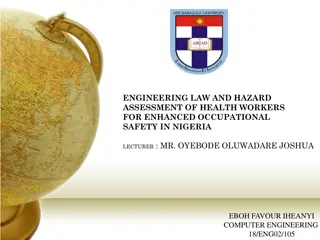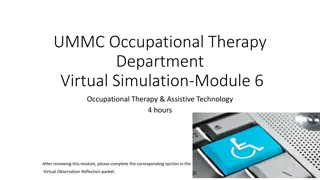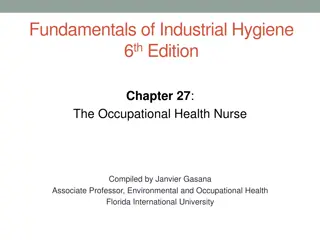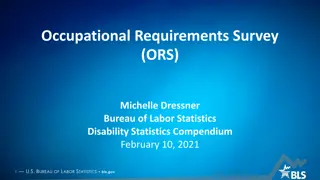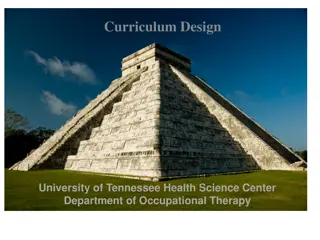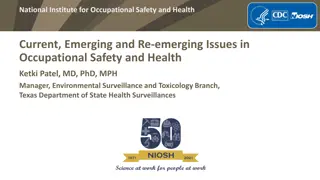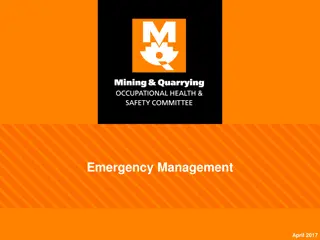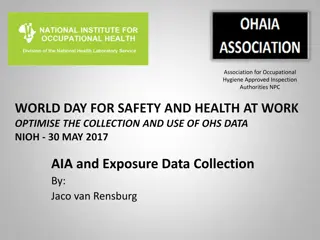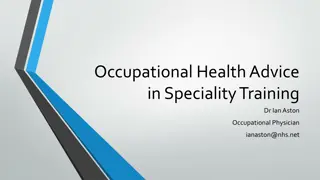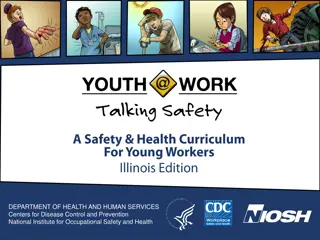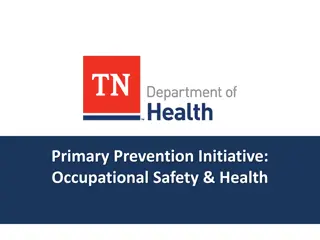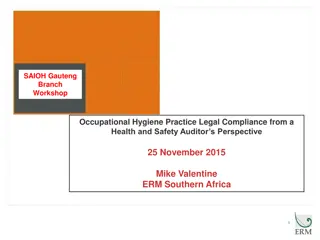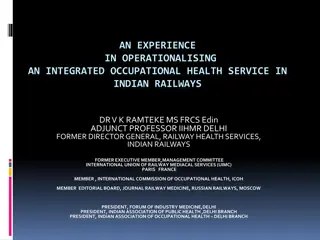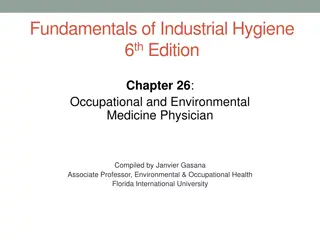Occupational Safety & Health Management System.
An Occupational Safety and Health Management System (OSHMS) is crucial for managing workplace safety and health effectively. Key components include policy development, legal compliance, organizational structure, training, emergency preparedness, incident investigation, continuous improvement, and documentation. By focusing on these components, organizations can create a safe working environment and ensure regulatory compliance.
Download Presentation

Please find below an Image/Link to download the presentation.
The content on the website is provided AS IS for your information and personal use only. It may not be sold, licensed, or shared on other websites without obtaining consent from the author.If you encounter any issues during the download, it is possible that the publisher has removed the file from their server.
You are allowed to download the files provided on this website for personal or commercial use, subject to the condition that they are used lawfully. All files are the property of their respective owners.
The content on the website is provided AS IS for your information and personal use only. It may not be sold, licensed, or shared on other websites without obtaining consent from the author.
E N D
Presentation Transcript
Occupational Safety & Health Management System www.hsestudyguide.com
Occupational Safety & Health Management System An Occupational Safety and Health Management System (OSHMS) is a comprehensive framework designed to manage and improve workplace safety and health. The primary goal is to create a safe and healthy working environment for employees while ensuring compliance with relevant regulations and standards. www.hsestudyguide.com
Key components of an effective Occupational Safety and Health Management Management System include: Policy Development: Risk Assessment: Identify and assess potential hazards and risks associated with the workplace, processes, and activities. This involves evaluating the likelihood and severity of accidents or illnesses. Establish a clear and concise occupational safety and health policy that reflects the organization's commitment to providing a safe workplace. Legal Compliance: Objectives and Targets: Ensure compliance with relevant occupational safety and health laws, regulations, and standards applicable to the industry and location. Define measurable objectives and targets related to occupational safety and health, aligning them with the organization's overall goals. www.hsestudyguide.com
Key components of an effective Occupational Safety and Health Management Management System include: Organizational Structure: Training and Awareness: Provide ongoing training to employees to enhance their awareness of occupational safety and health issues, as well as the necessary skills and knowledge to perform their tasks safely. Establish roles, responsibilities, and accountabilities for personnel at all levels to ensure effective implementation of the OSHMS. Emergency Preparedness: Monitoring and Measurement: Develop and implement plans for responding to emergencies, including evacuation procedures, first aid, and communication protocols. Establish processes for monitoring and measuring key performance indicators related to occupational safety and health to track progress and identify areas for improvement. www.hsestudyguide.com
Key components of an effective Occupational Safety and Health Management Management System include: Incident Investigation: Continuous Improvement: Foster a culture of continuous improvement by regularly reviewing and updating the OSHMS based on feedback, lessons learned, and changes in the workplace. Investigate and analyze incidents, accidents, or near-misses to identify root causes and implement corrective and preventive actions. Documentation and Record-Keeping: Maintain accurate documentation and records related to the OSHMS, including policies, procedures, risk assessments, training records, and incident reports. www.hsestudyguide.com
Implementing an effective Occupational Safety and Health Management System not only helps protect employees and mitigate risks but also contributes to enhanced organizational performance and reputation. www.hsestudyguide.com







